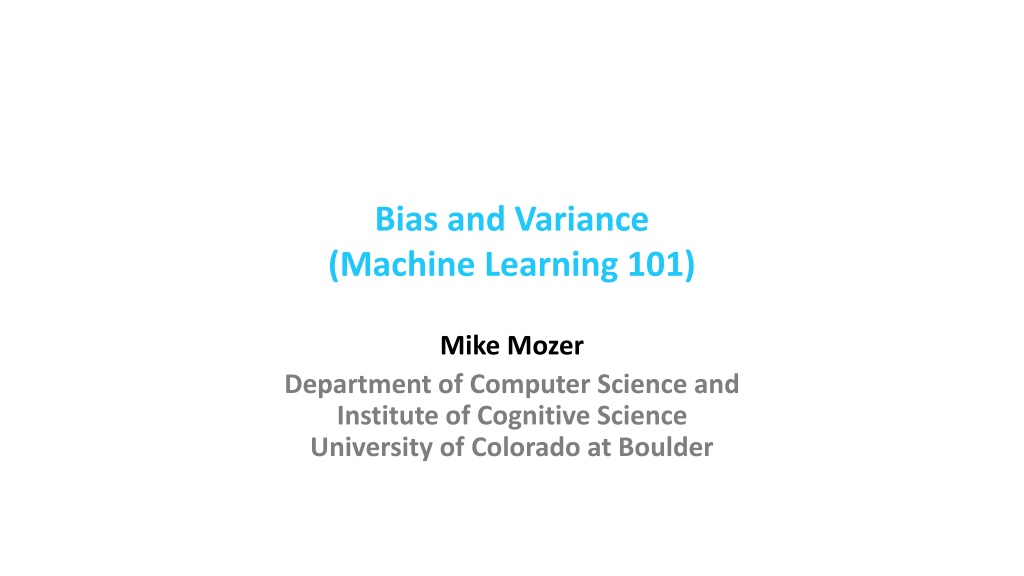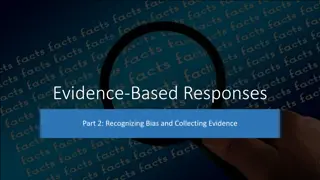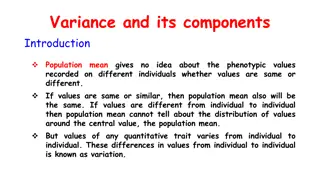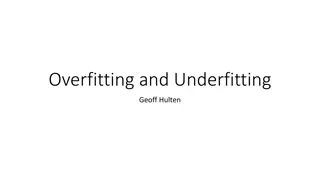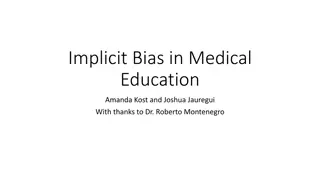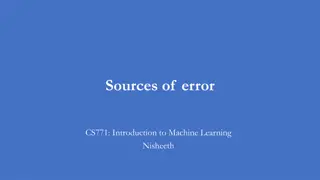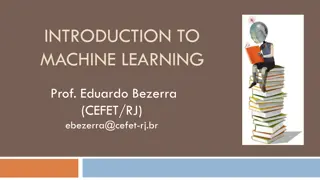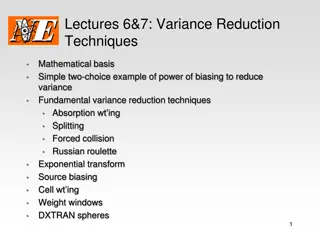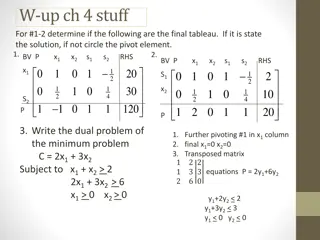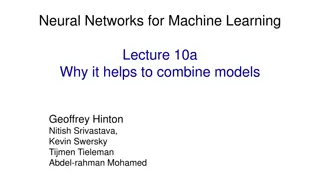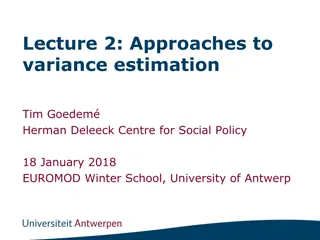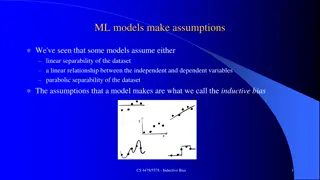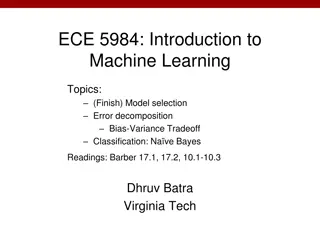Understanding Bias and Variance in Machine Learning
Exploring the concepts of bias and variance in machine learning through informative visuals and explanations. Discover how model space, restricting models, and the impact of bias and variance affect the performance of machine learning algorithms. Formalize bias and variance using mean squared error to evaluate model effectiveness.
Download Presentation

Please find below an Image/Link to download the presentation.
The content on the website is provided AS IS for your information and personal use only. It may not be sold, licensed, or shared on other websites without obtaining consent from the author. Download presentation by click this link. If you encounter any issues during the download, it is possible that the publisher has removed the file from their server.
E N D
Presentation Transcript
Bias and Variance (Machine Learning 101) Mike Mozer Department of Computer Science and Institute of Cognitive Science University of Colorado at Boulder
Learning Is Impossible What s my rule? 1 2 3 satisfies rule 4 5 6 satisfies rule 6 7 8 satisfies rule 9 2 31 does not satisfy rule Possible rules 3 consecutive single digits 3 consecutive integers 3 numbers in ascending order 3 numbers whose sum is less than 25 3 numbers < 10 1, 4, or 6 in first column yes to first 3 sequences, no to all others
Whats My Rule For Machine Learning x1 x2 x3 y 0 0 0 1 0 1 1 0 1 0 0 0 1 1 1 1 0 0 1 ? 0 1 0 ? 1 0 1 ? 1 1 0 ? 16 possible rules (models) With ? binary inputs and ? training examples, there are ??? ?possible models.
Model Space models consistent with data correct model all possible models More data helps In the limit of infinite data, look up table model is fine
Model Space models consistent with data correct model all possible models restricted model class Restricting model class can help Or it can hurt Depends on whether restrictions are domain appropriate
Restricting Models Models range in their flexibility to fit arbitrary data simple model high bias complex model low bias constrained low variance unconstrained high variance small capacity may prevent it from representing all structure in data large capacity may allow it to fit quirks in data and fail to capture regularities
Bias Regardless of training sample, or size of training sample, model will produce consistent errors
Variance Different samples of training data yield different model fits
Formalizing Bias and Variance Given data set ? = { ??,??, , ??,??} And model built from data set, ? ?;? We can evaluate the effectiveness of the model using mean squared error: ? ? ? MSE MSE = ? MSE MSE = ?? ?,? MSE MSE = ?? ?,?,? ? ? ?;? ? ? ?;? ? ? ?;? with constant ? = ?
? MSE MSE?= ??|? ? ? ?;? ? bias: difference between average model prediction (across data sets) and the target ? ?|? = ??? ?;? + ?? ? ?;? ??? ?;? + ? ? ? ?|? variance of models (across data sets) for a given point ? ? intrinsic noise in data set ??? ?;? ??? ?;? ? ?|?
Bias-Variance Trade Off MSE variance bias2
MSEtest variance bias2 model complexity (polynomial order) Gigerenzer & Brighton (2009)
Bias-Variance Trade Off Is Revealed Via Test Set Not Training Set MSEtest MSEtrain
Bias-Variance Trade Off Is Revealed Via Test Set Not Training Set MSEtest MSEtrain Gigerenzer & Brighton (2009)
Back To The Venn Diagram correct model all possible models high bias, low variance model class low bias, high variance model class Bias is not intrinsically bad if it is suitable for the problem domain
Current Perspective In Machine Learning We can learn complex domains using low bias model (deep net) more data tons of training data But will we have enough data? E.g., speech recognition more data
Scaling Function Single-speaker, small vocabulary, isolated words Multiple-speaker, small vocabulary, isolated words data set size log required Multiple-speaker, small vocabulary, connected speech Multiple-speaker, large vocabulary, connected speech Intelligent chatbot / Turing test domain complexity (also model complexity)
The Challenge To AI In the 1960s Neural nets (perceptrons) created wave of excitement But Minsky and Papert (1969) showed challenges to scaling Will it scale? 1995 In the 1990s Neural nets (back propagation) created wave of excitement Worked great on toy problems but arguments about scaling (Elman et al., 1996; Marcus, 1998) 2015 Now in the 2010s Neural nets (deep learning) created a wave of excitement Researchers have clearly moved beyond toy problems ? Nobody is yet complaining about scaling But there is no assurance that methods won t disappoint again
Solution To Scaling Dilemma Use domain-appropriate bias to reduce complexity of learning task data set size log required domain complexity (also model complexity)
Example Of Domain-Appropriate Bias: Vision Architecture of primate visual system visual hierarchy transformation from simple, low-order features to complex, high-order features transformation from position-specific features to position-invariant features source: neuronresearch.net/vision
Example Of Domain-Appropriate Bias: Vision Convolutional nets spatial locality features at nearby locations in an image are most likely to have joint causes and consequences spatial position homogeneity source: neuronresearch.net/vision features deemed significant in one region of an image are likely to be significant in others spatial scale homogeneity locality and position homogeneity should apply across a range of spatial scales source: benanne.github.io
